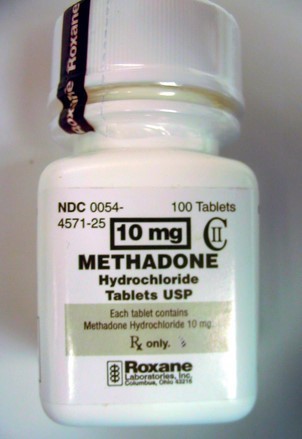Methadone Clinic Litchfield IL
Home
Top Methadone Clinic Litchfield IL Resources and Information Online
Methadone can cause slow or shallow breathing and dangerous changes in heartbeat that may not be felt by the patient." The advisory urged that physicians use caution when prescribing methadone to people who are not used to the drug and that people take the drug exactly as directed.[23] Adverse effects of methadone include:[citation needed] Sedation Diarrhea[24] or constipation[24][25] Flushing[25] Perspiration[25] and sweating[25] Heat intolerance Dizziness[24][26][27] or fainting[24][26][27] Weakness[25] Chronic fatigue, sleepiness[25] and exhaustion Sleep problems such as drowsiness,[24] trouble falling asleep (Insomnia),[25][26] and trouble staying asleep[25] Constricted pupils Dry mouth[24][25] Nausea[24][25] and vomiting[24][25] Low blood pressure Hallucinations[24][26] or confusion[24][26] Headache[25] Heart problems such as chest pain[24][26] or fast/pounding heartbeat[24][26][27] Abnormal heart rhythms[27][28] Respiratory problems such as trouble breathing,[24][26] slow or shallow breathing (hypoventilation),[24][26] light-headedness,[24][26][27] or fainting[24][26] Loss of appetite,[24][25] and in extreme cases anorexia Weight gain[25] Memory loss Stomach pains[25] Itching Difficulty urinating[25] Swelling of the hands, arms, feet, and legs[25] Feeling restless[24] or agitated Mood changes,[25] euphoria, disorientation Nervousness[24] or anxiety[24][26] Blurred vision[25] Decreased libido,[24][25] missed menstrual periods,[25] difficulty in reaching orgasm,[24] or impotence[24][25] Skin rash Seizures Central sleep apnea Withdrawal symptoms[edit] Physical symptoms[citation needed] Lightheadedness[29] Tearing of the eyes[29][30] Mydriasis (dilated pupils)[29] Photophobia (sensitivity to light) Hyperventilation syndrome (breathing that is too fast/deep) Runny nose[30] Yawning Sneezing[30] Nausea,[29][30] vomiting,[29][30] and diarrhea[29] Fever[30] Sweating[29] Chills[30] Tremors[29][30] Akathisia (restlessness) Tachycardia (fast heartbeat)[30] Aches[29] and pains, often in the joints or legs Elevated pain sensitivity Blood pressure that is too high (hypertension, may cause stroke) Cognitive symptoms[citation needed] Suicidal ideation Susceptibility to cravings[29] Depression[29] Spontaneous orgasm Prolonged insomnia Delirium Auditory hallucinations Visual hallucinations Increased perception of odors (olfaction), real or imagined Marked decrease or increase in sex drive Agitation Anxiety[29] Panic disorder Nervousness[29] Paranoia Delusions Apathy Anorexia (symptom) Methadone withdrawal symptoms are reported as being significantly more protracted than withdrawal from opioids with shorter half-lives. BUT, when you are taking something as strong as methadone, I think you should clear EVERYTHING -- all vitamins, supplements, OTCs, everything -- with your prescribing physician/program. When determining the correct dosage of methadone, age, general condition and medical status will all be taken into account. The staff usually consist of a physician to monitor the medications and treatments and nurses to administer the medication and ensure effective delivery (i.e. the person will actually consume the product).
Because methadone causes constipation, taking antidiarrheal medications such as diphenoxylate (Lomotil) and loperamide (Imodium) along with methadone can result in severe constipation. The medication is monitored by nursing staff and is prescribed by a physician. And just last week a 52-year-old father, who was forced off the CMP in September, died from septicemia after using an infected needle, The Press understands. Methadone can cause withdrawal symptoms if it is stopped suddenly.
Below are Some More Resources on liquid methadone side effects

Below are Some More Resources on long term methadone side effects Litchfield IL
Acute Pain Patients in methadone maintenance treatment for opioid dependence who experience physical trauma, postoperative pain or other acute pain cannot be expected to derive analgesia from their existing dose of methadone. Many people have successfully overcome their addiction by using methadone during detoxification and maintenance programs.
More Details Around long term methadone side effects
Overdose symptoms may include slow breathing and heart rate, severe drowsiness, muscle weakness, cold and clammy skin, pinpoint pupils, and fainting. Methadone disrupts the developmental process of the brain and its signal transmissions between cells. Other side effects that may commonly occur include anxiety, nervousness, restlessness, insomnia, weakness, drowsiness, dry mouth, nausea, vomiting, diarrhea, constipation, and decreased sex drive. These factors, combined with sedation, have been linked to the causation of extensive dental damage.[31][32] Overdose[edit] Most people who have overdosed on methadone may show some of the following symptoms: Miosis (constricted pupils)[33] Vomiting[34] Hypoventilation (breathing that is too slow/shallow)[33] Drowsiness,[33] sleepiness, disorientation, sedation, unresponsiveness Skin that is cool, clammy (damp), and pale[33] Limp muscles,[33] trouble staying awake, nausea Unconsciousness[33] and coma[33] Death[34] The respiratory depression of an overdose can be treated with naloxone.[30] Naloxone is preferred to the newer, longer acting antagonist naltrexone.
Right here are Some Even more Resources on what are the side effects of methadone Litchfield IL
The efforts of patients who are seeking rehabilitation, and clinic professionals who serve them, are significantly undermined by this criminal activity that surrounds them." [2] Relapse rates are high in patients who discontinue methadone maintenance, between 70-90%[3] The high relapse rate may be partially due to the severity of cases seen at methadone clinics, as well as the long-term effects of opioid use. The highest dose of Methadone that should be used for replacement therapy when treating severe opioid addiction is 160 mg. Dose adjustments should be made over the first week of treatment based on control of withdrawal symptoms at the time of expected peak activity (e.g., 2 to 4 hours after dosing). Methadone is contraindicated in any patient who has or is suspected of having a paralytic ileus. Methadone is prescribed for pain and also drug addiction detoxification. Nausea, vomiting,: Aggitation, shaking, and diarrhea are all seen in opioid withdrawal including methadone, although due to the long half like of Methadone it is actually less likely with this medication than many of the others. ... Ask your doctor before making any changes in how or when you take your medications. While generally considered successful as a treatment method, the use of this maintenance treatment is often viewed as controversial. 12, including limitations on unsupervised administration. Assess each patient's risk prior to prescribing, and monitor all patients regularly for the development of these behaviors or conditions. Anyway, back to my question, should I go see a doctor?
Click Here for More Information
Previous Next
You may also like:
Methadone Clinic Fergus Falls MN
Methadone Clinic Fort Myers FL
Methadone Clinic Kirkwood MO
Methadone Clinic Sunnyside WA
Methadone Clinic Fair Oaks CA